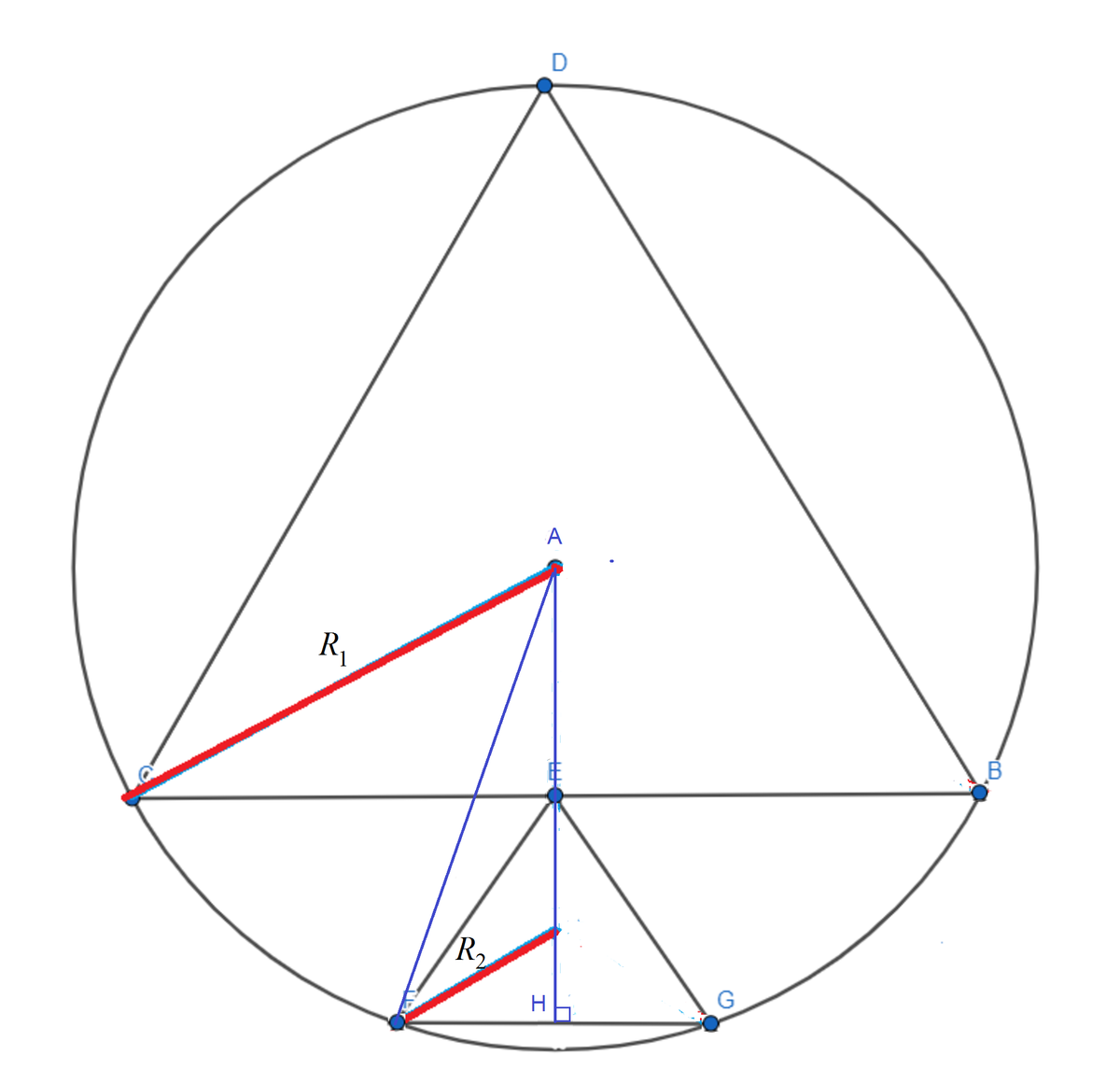A Sangaku geometry problem

In the diagram above, △ B C D and △ E F G are equilateral and B , C , D , F and G are concyclic. Let R 1 and R 2 be the circumradii of △ B C D and △ E F G respectively. Find R 1 R 2 .
Note: This is a variation of a Sangaku problem from the early 1800s.
The answer is 0.309107.
This section requires Javascript.
You are seeing this because something didn't load right. We suggest you, (a) try
refreshing the page, (b) enabling javascript if it is disabled on your browser and,
finally, (c)
loading the
non-javascript version of this page
. We're sorry about the hassle.
2 solutions
Thanks:), great solution. (+1)

Let R 1 = 1 and R 2 = r . Then R 1 R 2 = r . Let the centroid of △ B C D be A and the median of △ E F G be E H . Then we note that A E and E H are colinear and is perpendicular to F G . By Pythagorean theorem , we have:
A H 2 + F H 2 ( A E + E H ) 2 + F H 2 ( 2 1 + 2 3 r ) 2 + ( 2 3 r ) 2 9 r 2 + 6 r + 1 + 3 r 2 1 2 r 2 + 6 r − 3 4 r 2 + 2 r − 1 = A F 2 = A F 2 = 1 = 4 = 0 = 0
⟹ r = 8 2 2 − 4 ( − 1 ) ( 4 ) − 2 = 4 5 − 1 ≈ 0 . 3 0 9
@Chew-Seong Cheong I think you meant A H 2 + F H 2 = A F 2 ?
It's clear that A E = 2 R 1 because ∠ A C E = 3 0 o .
The triangle Δ A H F has sides A H = 2 R 1 + R 2 , H F = R 2 and A F = R 1 . Furthermore angle ∠ A H F = 1 2 0 o . Using cosine law:
R 1 2 = ( 2 R 1 + R 2 ) 2 + R 2 2 − 2 ( 2 R 1 + R 2 ) R 2 cos ( 1 2 0 o )
R 1 2 = 4 R 1 2 + 4 R 1 R 2 + 4 R 2 2 + R 2 2 + 4 2 R 2 R 1 + 4 R 2 2
1 2 R 2 2 + 6 R 1 R 2 − 3 R 1 2 = 0
4 R 2 2 + 2 R 1 R 2 − R 1 2 = 0
R 2 = 8 − 2 R 1 + 2 0 R 1 2
R 2 = R 1 ( 4 − 1 + 5 )
Thus:
R 1 R 2 ≈ 0 . 3 0 9 0 1 7